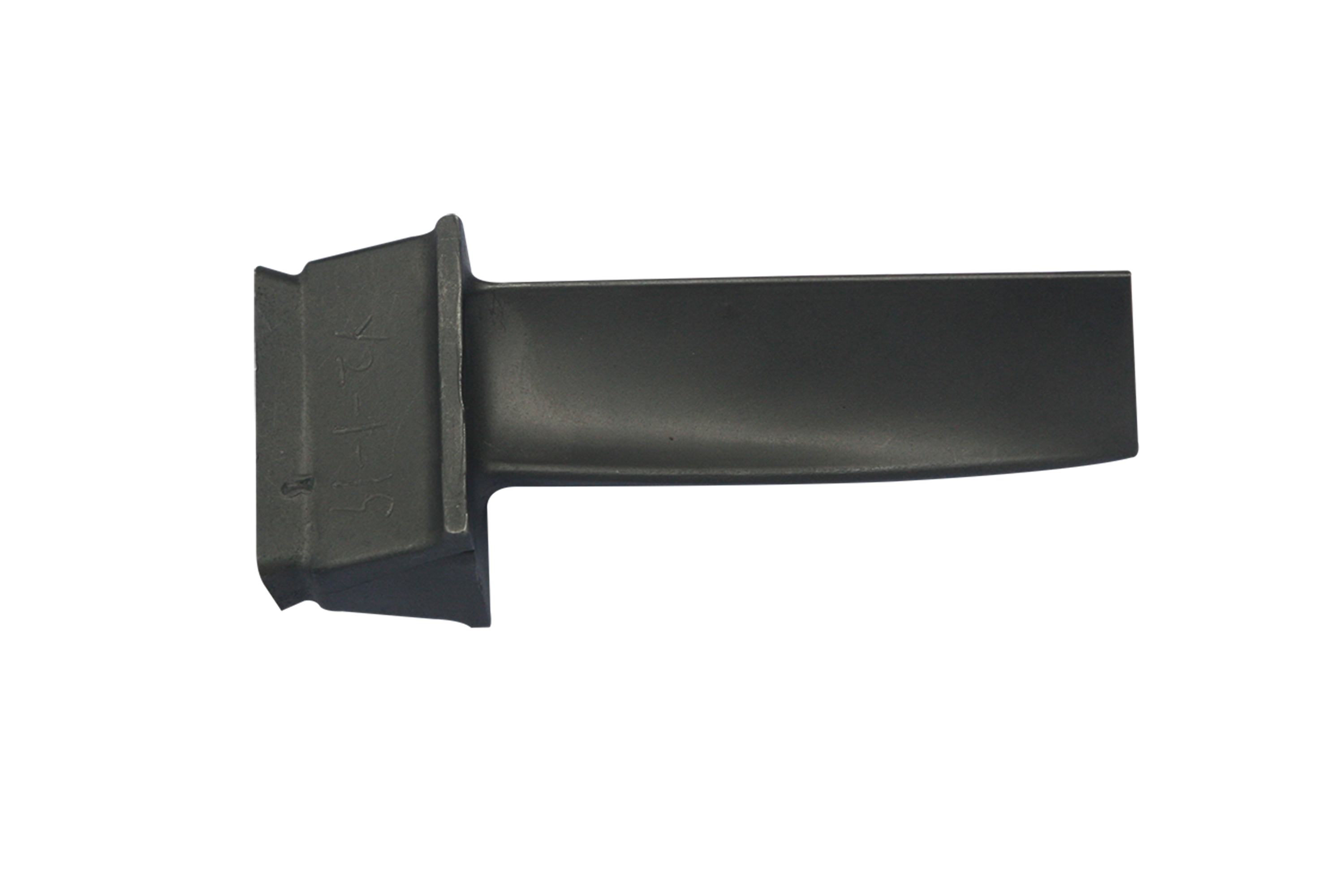Equiaxed Crystal Casting IN713LC Turbine Blades
Introduction
Equiaxed crystal casting technology provides superior solutions for manufacturing IN713LC turbine blades utilized in demanding aerospace and industrial turbine applications. IN713LC nickel-based superalloy offers outstanding strength, maintaining tensile capabilities of over 1034 MPa and reliable creep performance at temperatures approaching 982°C (1800°F), ideal for extreme thermal environments.
At Neway AeroTech, advanced superalloy equiaxed crystal casting processes ensure precise control over grain structure (0.5–2 mm), uniform material properties, and dimensional accuracy (±0.05 mm). Our turbine blades meet rigorous aerospace certifications such as AS9100 and NADCAP, fulfilling critical operational requirements.
Core Technology of IN713LC Equiaxed Crystal Turbine Blade Casting
Precision Mold Design: Customized aluminum molds are precisely machined to replicate turbine blade geometries within aerospace tolerances of ±0.05 mm.
Wax Pattern Formation: High-pressure wax injection produces precise turbine blade patterns, ensuring consistent replication of intricate geometrical features and surface finishes.
Multi-layer Ceramic Shell: Wax patterns coated with multiple layers of ceramic slurry and refractory sand, creating robust molds approximately 6–8 mm thick.
Autoclave Dewaxing Process: Molds undergo dewaxing at controlled autoclave temperatures around 150°C, effectively eliminating wax without altering mold dimensions or strength.
High-Temperature Shell Firing: Shells are fired at 1000°C to achieve optimal hardness, stability, and to remove moisture and residual contaminants.
Vacuum Alloy Melting: IN713LC alloy is precisely melted using vacuum induction casting furnaces at about 1450°C, achieving impurity-free melts and stable chemical composition.
Controlled Equiaxed Solidification: Precise thermal management during casting ensures formation of uniform equiaxed grain structures with optimal sizes of 0.5–2 mm.
Final Shell Removal and Cleanup: Cooled ceramic molds are removed through mechanical and high-pressure cleaning techniques, preserving turbine blade dimensional integrity and surface finish.
Material Characteristics of IN713LC
IN713LC is specially developed to withstand high thermal stresses and aggressive environments, featuring:
Operating Temperature: Maximum continuous service temperature up to 982°C (1800°F).
Ultimate Tensile Strength: Exceeding 1034 MPa at ambient temperature.
Yield Strength: At least 862 MPa at room temperature.
Elongation: Minimum ductility of 5%.
Creep Resistance: Maintains a creep rupture strength greater than 200 MPa after 1000 hours at 760°C.
Corrosion Resistance: Superior protection against oxidation and corrosion under prolonged high-temperature exposure.
Case Study: IN713LC Equiaxed Crystal Turbine Blade Production
Project Background
Neway AeroTech provided precision manufacturing of IN713LC equiaxed turbine blades for an industry-leading aerospace company. The project required blades with excellent thermal stability, fatigue durability, and stringent dimensional precision for commercial aviation turbines and industrial gas turbine applications.
Common Turbine Blade Applications
Notable turbines utilizing IN713LC blades include:
GE Aviation F404: Military aircraft turbine blades providing critical performance for fighter jets like the F/A-18 Hornet, demanding high structural stability.
Rolls-Royce AE 3007: Regional and business jet engines requiring turbine blades optimized for high-efficiency aerodynamics and extended thermal durability.
Pratt & Whitney PW100 Series: Widely employed in turboprop-powered regional aircraft, requiring reliable high-temperature blade performance under prolonged operation.
Solar Turbines Titan 130: Industrial turbines used in power generation and oil and gas compression, demanding robust corrosion and creep-resistant turbine blades.
Selection and Structural Features of IN713LC Turbine Blades
Turbine blades typically possess:
Aerodynamic designs optimized through CFD analysis.
Complex internal cooling channels are precisely integrated to mitigate thermal gradients.
Thin-wall structures (minimum 0.8 mm thickness) reduce weight without compromising strength.
Precision-machined surfaces ensure dimensional tolerances within ±0.02 mm.
Turbine Blade Manufacturing Solution
Mold Fabrication and Wax Patterning: Design and fabrication of accurate molds followed by precise wax pattern injection, ensuring critical aerodynamic features and dimensional consistency.
Ceramic Mold Development: Ceramic shell layers are carefully applied over wax patterns, ensuring high mold integrity to maintain precision during the casting process.
Vacuum Investment Casting: Vacuum induction melting process at approximately 1450°C ensures consistent material quality, low defect rates, and accurate chemical compositions.
Equiaxed Grain Control: Solidification is controlled precisely to maintain grain structures between 0.5–2 mm, enhancing fatigue life and resistance to thermal stresses.
Hot Isostatic Pressing (HIP): Performed at 1150°C and 150 MPa, HIP reduces internal porosity significantly, strengthening blade mechanical integrity and fatigue resistance.
Precision CNC Machining: High-accuracy CNC machining is employed to finalize aerodynamic surfaces and dimensional tolerances within ±0.02 mm, critical for blade efficiency.
Internal Channel EDM: Advanced EDM technology precisely forms internal cooling passages, effectively managing thermal loads within narrow walls of 0.8 mm thickness.
Surface Treatment and Final Inspection: Surface finishing treatments coupled with rigorous inspections, including dimensional verification (CMM) and comprehensive non-destructive testing (X-ray, ultrasonic), ensuring aerospace-quality compliance.
Core Manufacturing Challenges of IN713LC Turbine Blades
Maintaining uniform and consistent equiaxed grain structures (0.5–2 mm).
Minimizing microstructural defects and porosity.
Achieving precise dimensional accuracy (±0.05 mm) consistently.
Ensuring stable mechanical properties across complex blade geometries.
Results and Verification
Consistent grain size (0.5–2 mm) achieved, significantly boosting fatigue life and component reliability in high-cycle operations.
Comprehensive X-ray and ultrasonic inspections verified zero internal defects, meeting stringent AS9100 aerospace quality standards.
Verified tensile strengths consistently surpassing 1034 MPa, ensuring exceptional operational reliability under severe conditions.
Fatigue endurance tests demonstrated exceeding 100,000 cycles under simulated high-temperature and mechanical load scenarios, validating extended blade lifespan.
FAQs
What makes IN713LC particularly suitable for turbine blade applications?
Which specific turbines typically use IN713LC equiaxed crystal cast blades?
How does Neway AeroTech achieve precise control over blade grain structures?
What inspection methods ensure IN713LC turbine blade integrity?
What precision tolerances are achievable for turbine blades manufactured using equiaxed crystal casting?

